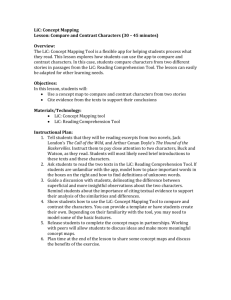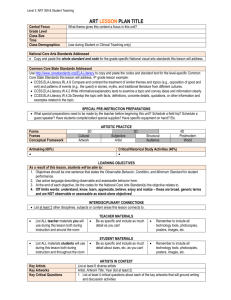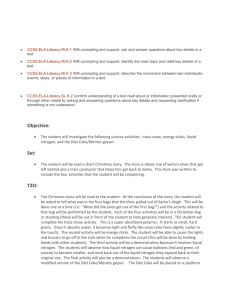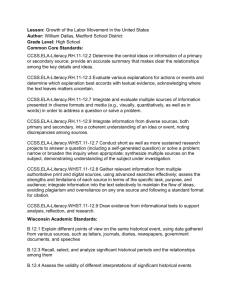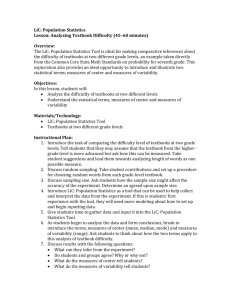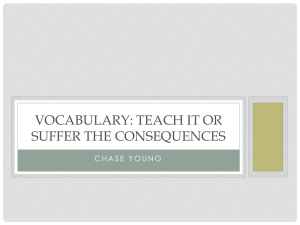lesson plan - K
advertisement
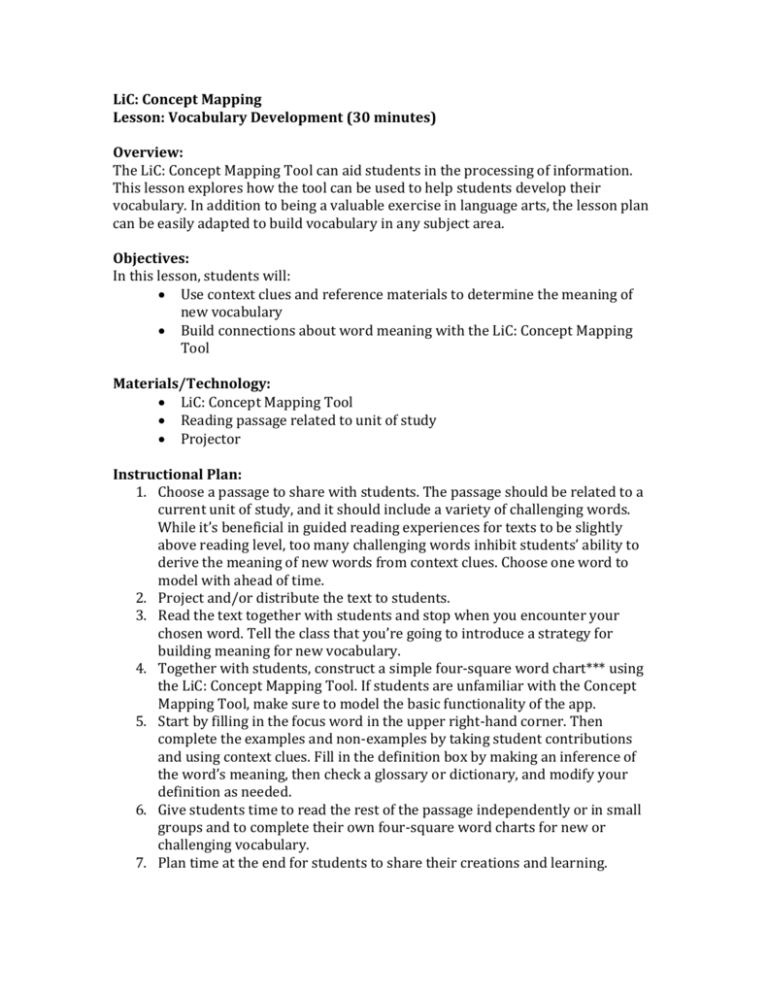
LiC: Concept Mapping Lesson: Vocabulary Development (30 minutes) Overview: The LiC: Concept Mapping Tool can aid students in the processing of information. This lesson explores how the tool can be used to help students develop their vocabulary. In addition to being a valuable exercise in language arts, the lesson plan can be easily adapted to build vocabulary in any subject area. Objectives: In this lesson, students will: Use context clues and reference materials to determine the meaning of new vocabulary Build connections about word meaning with the LiC: Concept Mapping Tool Materials/Technology: LiC: Concept Mapping Tool Reading passage related to unit of study Projector Instructional Plan: 1. Choose a passage to share with students. The passage should be related to a current unit of study, and it should include a variety of challenging words. While it’s beneficial in guided reading experiences for texts to be slightly above reading level, too many challenging words inhibit students’ ability to derive the meaning of new words from context clues. Choose one word to model with ahead of time. 2. Project and/or distribute the text to students. 3. Read the text together with students and stop when you encounter your chosen word. Tell the class that you’re going to introduce a strategy for building meaning for new vocabulary. 4. Together with students, construct a simple four-square word chart*** using the LiC: Concept Mapping Tool. If students are unfamiliar with the Concept Mapping Tool, make sure to model the basic functionality of the app. 5. Start by filling in the focus word in the upper right-hand corner. Then complete the examples and non-examples by taking student contributions and using context clues. Fill in the definition box by making an inference of the word’s meaning, then check a glossary or dictionary, and modify your definition as needed. 6. Give students time to read the rest of the passage independently or in small groups and to complete their own four-square word charts for new or challenging vocabulary. 7. Plan time at the end for students to share their creations and learning. Examples: Blank Completed Assessment Strategies: Build peer-assessment into group-work time Ask students to share one chart with you at the end of the lesson Standards: This lesson is designed to address the following Common Core State Standards: CCSS.ELA-LITERACY.RL.7.4 CCSS.ELA-LITERACY.RI.7.4 CCSS.ELA-LITERACY.L.7.4 A, B, C, D CCSS.ELA-LITERACY.L.7.5 CCSS.ELA-LITERACY.L.7.6 Next Steps: Once students know the strategy, there are a variety of possibilities to extend learning, including the following: Share and collect new word charts in a digital word bank Print and contribute to a unit of study word wall Convert to flashcards for vocabulary practice *** The four-square word chart comes from Word Power by Steven Stahl & Barbara Kapinus, 2001.


